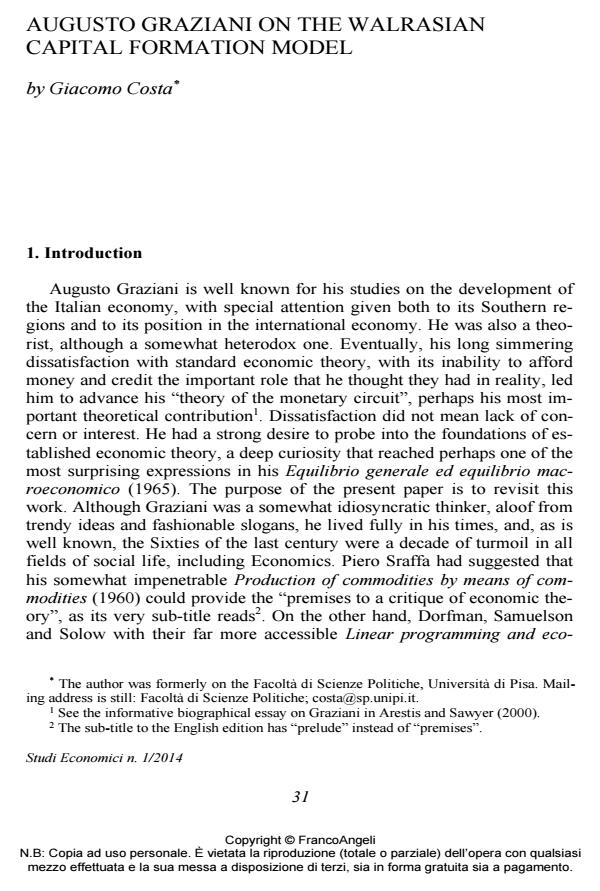Augusto Graziani on the walrasian capital formation model
Titolo Rivista STUDI ECONOMICI
Autori/Curatori Giacomo Costa
Anno di pubblicazione 2015 Fascicolo 2014/112
Lingua Inglese Numero pagine 22 P. 31-52 Dimensione file 94 KB
DOI 10.3280/STE2014-112003
Il DOI è il codice a barre della proprietà intellettuale: per saperne di più
clicca qui
Qui sotto puoi vedere in anteprima la prima pagina di questo articolo.
Se questo articolo ti interessa, lo puoi acquistare (e scaricare in formato pdf) seguendo le facili indicazioni per acquistare il download credit. Acquista Download Credits per scaricare questo Articolo in formato PDF

FrancoAngeli è membro della Publishers International Linking Association, Inc (PILA)associazione indipendente e non profit per facilitare (attraverso i servizi tecnologici implementati da CrossRef.org) l’accesso degli studiosi ai contenuti digitali nelle pubblicazioni professionali e scientifiche
In the Sixties of the last century there was in Italy a re-kindling of interest for Walrasian theory. Several economists wrote on it, expounding opposing opinions. This partly reflected the hectic ideological climate of that decade, and Graziani could not but be influenced by it. Yet his book Equilibrio generale ed equilibrio macroeconomico testifies to his deep intellectual curiosity and searching attitude. The key problem was the consistency of the Walrasian capital formation model. The dominant opinion was that of over-determinacy. Graziani opted for under-determinacy. He provided two arguments, the first of which was based on a misinterpretation of Walras’ Law, the second, an ingenious one, would have led, if properly completed, to determinacy. His criticisms of over-determinacy are penetrating and constructive: he suggested a promising dynamic over-determinacy thesis which integrates the markets for newly produced and for second hand capital goods.
Parole chiave:Walrasian capital formation model; Italian Economics; Walrasian vs Austrian capital theory; capital in general equilibrium; indeterminacy, determinacy, over-determinacy in the Walrasian capital model; dynamic over-determinacy in the Walrasian capital formation model; expectations in the Walrasian capital formation model.
Jel codes:B13, D50, D92, E13
- The modern Italian debate on the Walrasian theory of capitalization (1960-1971) Giovanni Michelagnoli, in HISTORY OF ECONOMIC THOUGHT AND POLICY 1/2021 pp.131
DOI: 10.3280/SPE2021-001006
Giacomo Costa, Augusto Graziani on the walrasian capital formation model in "STUDI ECONOMICI " 112/2014, pp 31-52, DOI: 10.3280/STE2014-112003